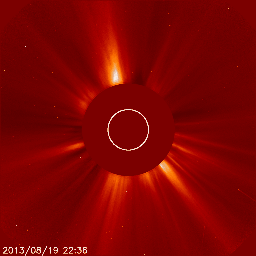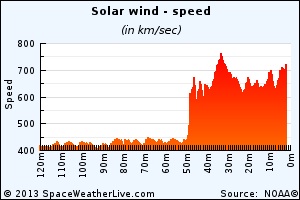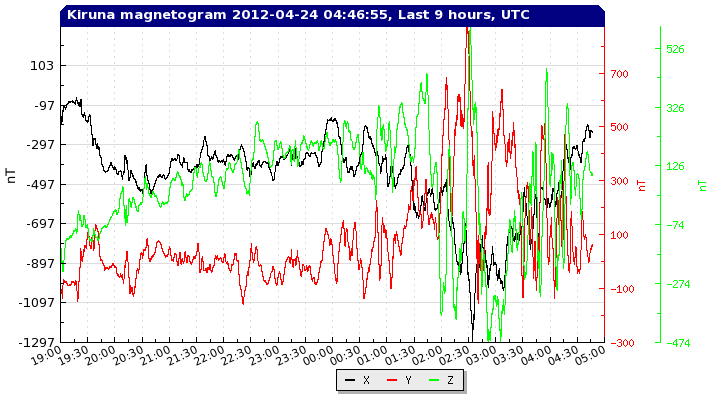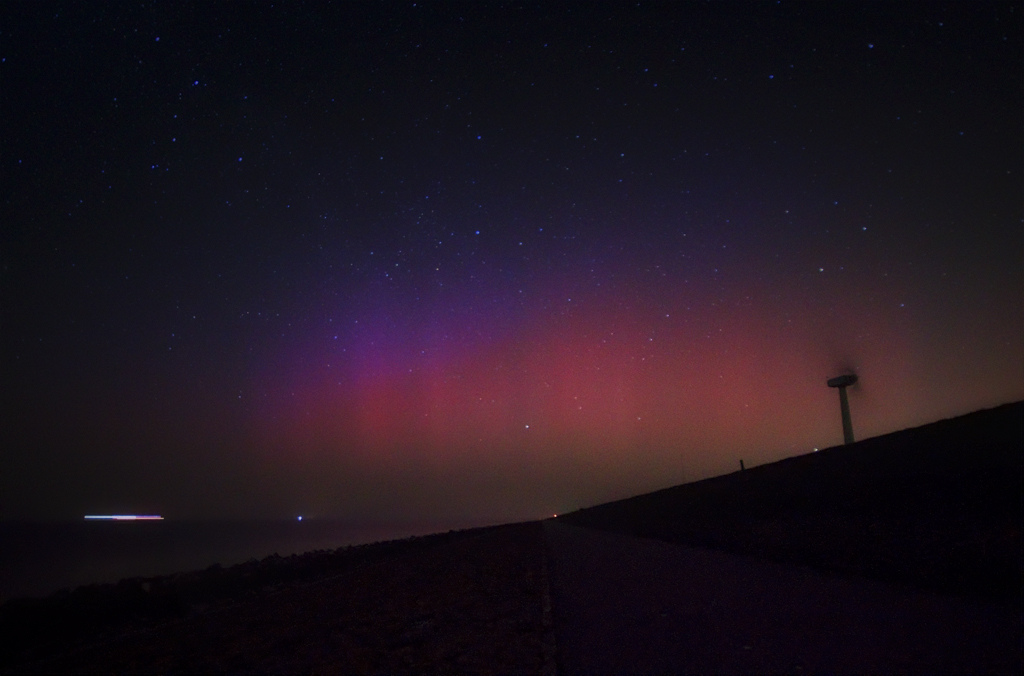When can we see the aurora at Middle latitudes?
This is one of the toughest questions to answer because it depends on so many parameters. We do get this question a lot of times and each time we have the same answer. In this help topic we’ll try to explain what is needed before you can run outside.
What is needed to see it?
The first thing that needs to happen and also the most important thing to happen are earth-directed solar eruptions or solar flares. You can follow this live on our website. Only the strong and major flares (high-level M and X-class flares) are candidates to cause sufficient storming for aurora on middle latitudes. During strong and long-duration solar flares, material of the Sun gets blown into space. This is called a coronal mass ejection. If the eruption comes from a sunspot group which is located near the centre of the earth-facing solar disk, then chances are high that a resulting coronal mass ejection will have an earth-directed component. This however is still no guarantee that we can expect an auroral display soon. There are a lot of variables involved such as the duration of the solar flare, the size of the plasma cloud and with what speed the coronal mass ejection departed. The arrival time of a coronal mass ejection is calculated by determining the departure speed of the coronal mass ejection. Scientists use complex methods to do this because the coronal mass ejection slows down between the Sun and Earth. It is very hard to know by how much the coronal mass ejection slows down between the Sun and Earth so the actual arrival time of the coronal mass ejection may differ by six hours or sometimes even more! The major coronal mass ejections arrive at Earth between 24 and 48 hours after they were launched. It is thus important to have some patience, there won't be aurora visible directly after a solar flare. We do of course keep you up to date when there is a coronal mass ejection on it's way to Earth. On our website, under the reports tab, we provide the daily activity reports of NOAA which gives an overview of the past 24 hours worth of solar activity and a forecast on the arrival times and chances for geomagnetic storms. We also provide regular home-made updates in our forum during high solar activity and when significant geomagnetic activity is being expected.

Image: Example of a full halo CME on it’s way to Earth as seen by SOHO/LASCO C2.
If there is an Earth-directed coronal mass ejection on it’s way to Earth, we can look forward to it’s arrival. Now it’s crucial to keep an eye on the solar wind and the interplanetary magnetic field (IMF) data. A coronal mass ejection arrival is most of the time clearly visible on the plots because the solar wind speed jumps with sometimes more than 100km/sec. The interplanetary magnetic field strength also jumps suddenly when the cloud arrives. But even then it is not yet known if we’ll see aurora on the middle latitudes. The solar wind speed must be high (about 700km/sec or higher is desirable but not a must), the strength of the interplanetary magnetic field must be high (preferably higher than 25nT) but the most important parameter is the direction (Bz) of the interplanetary magnetic field, which must be strong southward. This last parameter can’t be predicted very well, so we don’t know for sure until the cloud arrives at the ACE spacecraft what the direction of the interplanetary magnetic field (Bz) will be like. Based on these parameters we can make a good estimate whether or not we can expect aurora on the middle latitudes, but don’t run outside just yet!

Image: This graph shows a CME arrival in 2013. Note the sudden jump from 400km/sec to almost 700km/sec.
The last parameter that we need to consult is a local magnetometer. A magnetometer shows how disturbed Earth’s magnetic field is and gives an indication of the current geomagnetic conditions. In Europe we mostly use the Kiruna Magnetometer which is shown on our website. In the plot we look at the black line, if the deflection reaches 1300nT, run outside, there will likely be aurora visible on the middle latitudes.

Image: Example of the Kiruna magnetogram when there is a chance for aurora on the middle latitudes.
When the geomagnetic conditions are only just good enough to see some aurora on the horizon then you need to make sure that you are located at a dark observing site, away from the city lights. During severe to extreme geomagnetic storms, the aurora will be much easier to spot. The color of the aurora will be mostly a red glow on the horizon which can easily be picked up by a DSLR. More colors will become visible during stronger storms and the aurora will also become visible higher in the sky.

Image: Example of an aurora display low on the horizon as seen in 2012 by Ide Geert Koffeman from The Netherlands.
This is too hard for me to understand… can you make it a bit more simple?
Yes, of course! That’s why we have an auroral activity meter on our website with live chances for auroras on the high, middle and low latitudes. In the most top-right corner there is always a warning-box which indicates if there are middle latitude auroral activity chances right now. When it’s green then there are currently no chances. When it’s yellow, there is a slight chance. When it’s orange, there is a decent chance and when it’s red then there is a very good chance to see aurora.
Latest news
Latest forum messages
Support SpaceWeatherLive.com!
A lot of people come to SpaceWeatherLive to follow the Sun's activity or if there is aurora to be seen, but with more traffic comes higher server costs. Consider a donation if you enjoy SpaceWeatherLive so we can keep the website online!

Space weather facts
| Last X-flare | 2024/03/28 | X1.1 |
| Last M-flare | 2024/04/19 | M1.0 |
| Last geomagnetic storm | 2024/04/16 | Kp5 (G1) |
| Spotless days | |
|---|---|
| Last spotless day | 2022/06/08 |
| Monthly mean Sunspot Number | |
|---|---|
| March 2024 | 104.9 -19.8 |


